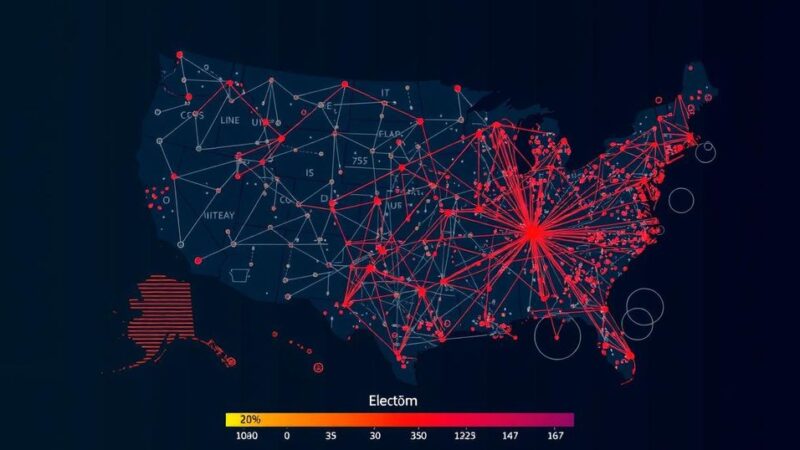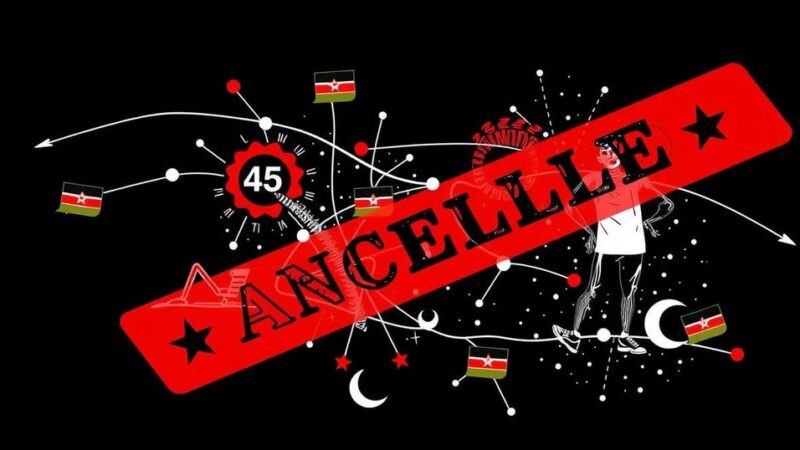In the final days before the election, Kamala Harris has surged ahead of Donald Trump in prediction markets, highlighting significant decreases in Trump’s odds amidst changing polling data. Recent events and voter sentiment indicate a closely contested race leading up to Election Day, with pivotal implications for both candidates.
In the final days leading up to Election Day, prediction markets have witnessed a notable shift away from Donald Trump, who had recently appeared to be a strong contender. PredictIt currently indicates that Kamala Harris is leading, with her winning contract priced at 54 cents as of Sunday, a significant increase from 46 cents just two days prior and 42 cents a week ago. Meanwhile, Trump’s contract has decreased in value, now standing at 51 cents, down from 60 cents on Tuesday. Additionally, data from Kalshi shows Trump’s odds of winning have dropped to 51% as of Sunday, compared to 64.6% on Tuesday, while Harris’s odds have increased to 49%. The IBKR Forecast Trader from Interactive Brokers echoes this trend, reporting a decline in Trump’s winning odds to 54%, down from 68% in a similar timeframe. Harris’s performance surged to 54% before settling at 48% later in the day, a substantial rise from 37% earlier in the week. Thomas Peterffy, chairman of Interactive Brokers, discussed the dramatic shift in Harris’s odds, attributing the significant 8-point increase to recent news coverage rather than to potential market manipulation, which he characterized as both illegal and unlikely in this circumstance. Data scientist Thomas Miller noted a pivotal moment occurred during Trump’s rally in Madison Square Garden, where a controversial remark by comedian Tony Hinchcliffe sparked widespread backlash, contributing to Trump’s declining momentum. Support for Harris has also been bolstered by recent polling data, including a closely watched poll by the Des Moines Register that indicates her leading Trump 47% to 44% among likely voters, reflecting a change from the previous month when Trump had a 4-point advantage. Furthermore, a New York Times/Siena College poll suggests that undecided voters are leaning towards Harris in key battleground states. Despite these shifts, the overall landscape remains competitive, with a recent analysis by 538 still suggesting a probability of winning at 53% for Trump to 47% for Harris. José Torres, a senior economist at Interactive Brokers, noted that a Republican sweep across the White House, Senate, and House of Representatives remains narrowly favored according to their forecasting model.
The shifting dynamics in prediction markets serve as a barometer for the evolving political climate in the final days leading up to an election. Historical trends indicate that movement in these markets can often reflect changes in public opinion and reaction to key events. With millions of voters having already cast their ballots, the interplay of recent polling data and public sentiment will likely influence the outcome of the election, particularly in battleground states critical to the candidates’ success.
In summary, the prediction markets have experienced a significant shift, with Kamala Harris gaining ground at the expense of Donald Trump as Election Day approaches. Factors contributing to this change include recent polling data, public backlash from controversial remarks, and evolving voter sentiment in key swing states. The outlook remains competitive, underscoring the uncertain nature of electoral dynamics just days before voters head to the polls.
Original Source: fortune.com






